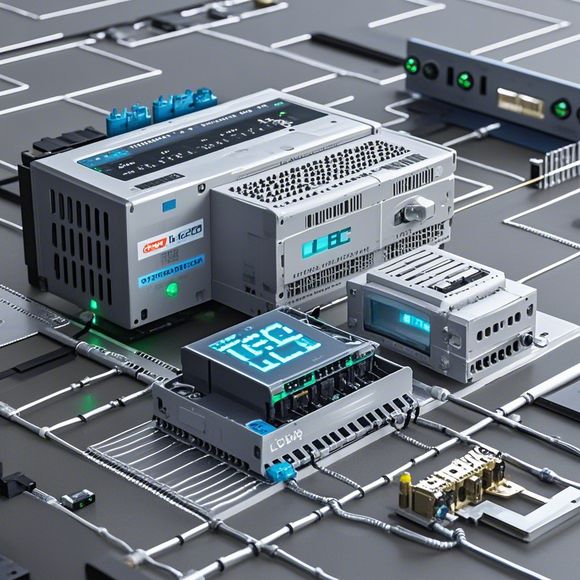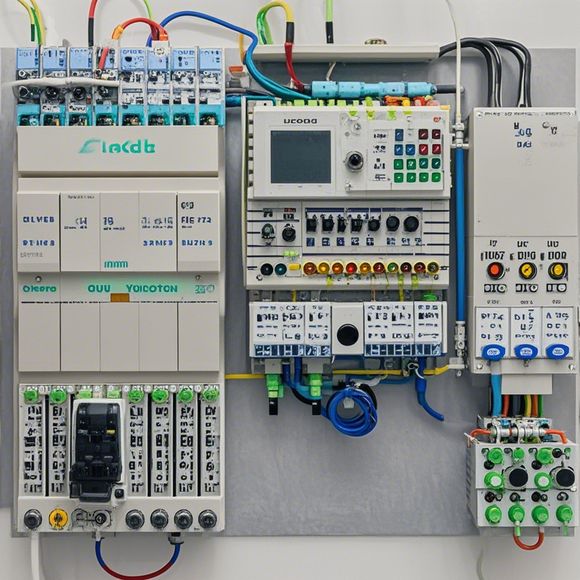PLC Control Systems Principles and Applications
PLC Control Systems Principles and ApplicationsPLC stands for Programmable Logic Controller, which is a type of digital electronic controller used in industrial settings for automation and control. These systems are designed to perform a specific task, such as monitoring and managing equipment or controlling processes, without the need for human intervention. Essential components of a PLC system include an input/output interface, processing unit, memory, and power supply. They can be programmed with different algorithms to execute various tasks efficiently and accurately.Applications of PLC Control Systems1. Industrial Automation - PLC systems are extensively used in manufacturing industries to automate production lines, monitor and manage equipment, and ensure safety and efficiency.2. Process Control - PLCs are used to manage and control industrial processes, including heating and cooling systems, water and waste treatment processes, and chemical reactions.3. Consumer Goods Production - PLCs are used in consumer goods production to control machines that produce products like food and beverage items, textiles, and electronics.4. Healthcare - In healthcare applications, PLCs are used to manage equipment in operating rooms, monitor patient conditions, and automate medical procedures.5. Agriculture - PLCs are employed in agriculture to automate farm operations, monitor soil moisture and fertilizer usage, and manage irrigation systems.
Introduction:
In modern industrial settings, the role of programmable logic controllers (PLCs) has become increasingly critical. These devices are designed to control various processes, from simple manufacturing tasks to complex industrial systems. The ability to automate these systems allows for increased efficiency, reduced downtime, and improved quality control, making them a valuable tool in today's competitive market. In this guide, we will delve into the principles of PLC control systems and provide insights into their applications in different industries.
1、PLC Basics

A PLC is a digital computer system that executes instructions stored on a read-only memory (ROM). Unlike other computers, PLCs are specifically designed for industrial use and can handle large amounts of data quickly. They consist of several main components, including the Central Processing Unit (CPU), input/output interface (I/O), RAM, and ROM. The CPU performs calculations based on commands received from external inputs and outputs results through I/O devices.
2、Functions of PLCs
PLCs come in various configurations, each with its own set of features and abilities. Some common functions include:
- Input/Output (I/O) Interface: This part of the PLC enables it to receive signals from sensors or external devices and generate signals to control other components.
- Memory: PLCs have an internal storage area where they can store information, such as program codes, data, and settings. This allows for quick access and reuse of programs.
- Programmable Functions: Certain models of PLCs allow users to write and modify programs to suit specific needs. This feature is particularly useful when production requirements change frequently.
- Analog Input: Many PLCs can handle analog signals, allowing for the measurement and control of variables like temperature and pressure.
3、Applications of PLCs
PLCs have found application in a wide range of industries, from manufacturing and construction to healthcare and transportation. Here are some examples:
- Manufacturing: In manufacturing, PLCs are used to control assembly lines, monitor process conditions, and optimize workflow. For example, in a car manufacturing plant, a PLC can be used to control assembly steps, monitor assembly quality, and report progress to supervisors.

- Healthcare: In healthcare, PLCs are used to control medical equipment and monitor patient data. For example, a PLC could be used to control a ventilator during emergency situations, or to monitor vital signs in a hospital setting.
- Renewable Energy: PLCs can be integrated into renewable energy systems to monitor solar panels or wind turbines, adjusting power output based on weather conditions or energy demand.
4、Challenges in Automation with PLCs
While PLCs offer significant advantages in automation, there are also challenges to consider when implementing these systems. One major challenge is ensuring reliable communication between PLCs and other systems. Additionally, programming and maintenance of PLC software can be complex, requiring technical expertise. Finally, there may be regulatory hurdles associated with integrating PLCs into existing infrastructures, especially in industries with strict safety regulations.
5、Future Developments
The field of PLC control systems is constantly evolving, with advancements in technology leading to new applications and capabilities. For instance, advancements in Internet of Things (IoT) technology are enabling more sophisticated monitoring and control systems. Furthermore, advancements in artificial intelligence (AI) are paving the way for intelligent automation solutions that can learn and adapt to changing conditions, further enhancing productivity and efficiency.
6、Conclusion
In conclusion, PLC control systems play a crucial role in modern industry, allowing for efficient automation and streamlining processes. By understanding the basics of these systems and exploring their applications, businesses can leverage the benefits they offer while addressing any challenges they may face. As technology continues to advance, we can expect even more innovative solutions to emerge, further revolutionizing the way we work and operate our industrial operations.
Content expansion reading:
Articles related to the knowledge points of this article:
PLC Controller Selection Guide for Foreign Trade Operations
PLC Controller for Manufacturing Automation
PLC Programming for Automation Control in the Manufacturing Industry
Connecting a PLC Controller to Your Computer
PLC Controllers: A Comprehensive Guide to Understanding Their Prices